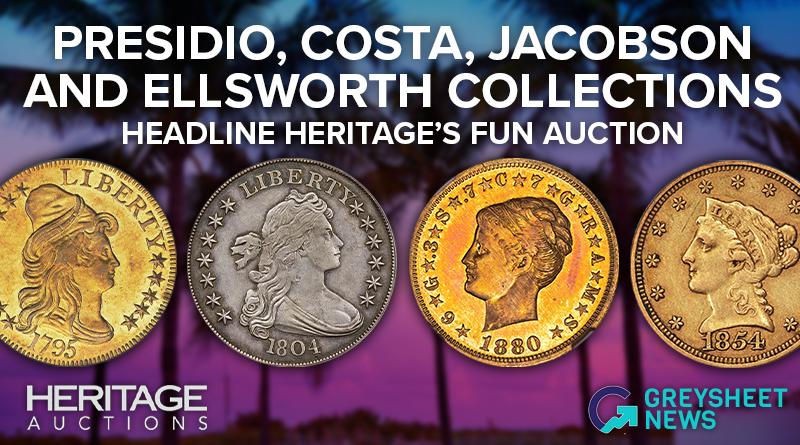Greysheet & CPG® PRICE GUIDE
- U.S. Coins /
- Pattern Coinage /
-
Patterns (1855) Values
Year
Sort by
About This Series
History and Overview
This year saw continuing experiments for a reduced-diameter copper cent, employing an 1855 dated Flying Eagle obverse similar to that used in 1854 in combination with two different styles of reverse wreath (both of which had been used in 1854). Various alloys including French bronze were tested. Mint records indicated three metal compositions:11 bronze (95% copper, 4% tin, 1% zinc); 90% copper, 10% nickel; and 80% copper, 20% nickel.
At least one half dollar was struck of this date, from regular dies but in aluminum. It is not known whether it is indeed a contemporary (not restrike) impression, or whether it is part of the numerous later aluminum restrikes. (In 1855, aluminum was considered a very expensive metal, hard to obtain and refine.) The only piece traced resides at Princeton University, where it has been since the 1880s.
Collecting Perspective
Numismatic interest for patterns of this year is focused on the Flying Eagle cents, of which most numismatists aspire to have one example, although two different wreath variations and several metal variations can be obtained. The metal variations, delineated below, are virtually impossible to distinguish from each other in the absence of elemental analysis. Again, although originals may have been struck in bronze (as believed by Dr. Judd), it may be that any and all bronze pieces are restrikes.
Catalog Detail
Legal Disclaimer
The prices listed in our database are intended to be used as an indication only. Users are strongly encouraged to seek multiple sources of pricing before making a final determination of value. CDN Publishing is not responsible for typographical or database-related errors. Your use of this site indicates full acceptance of these terms.

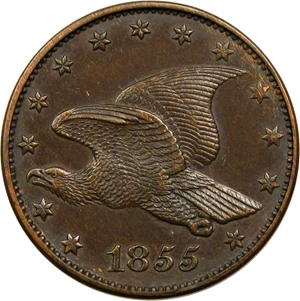
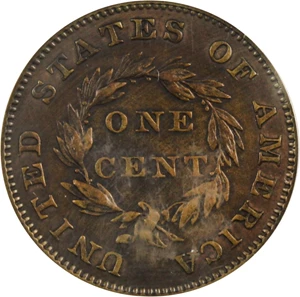
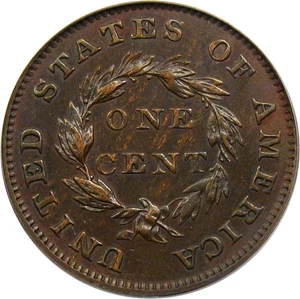
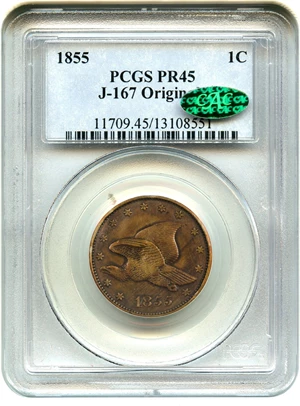
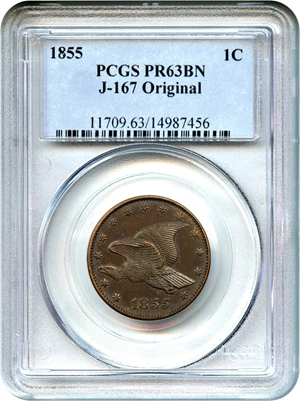
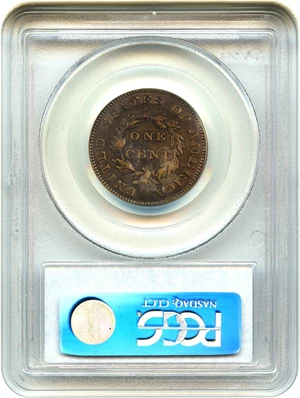
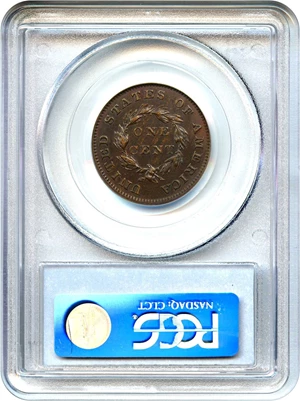






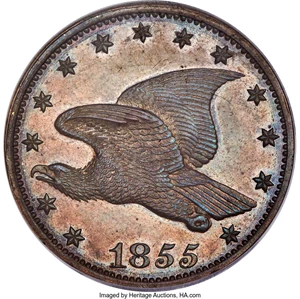





From the Greysheet Marketplace
Buy Now: $3,695.00
Buy Now: $3,695.00
Buy Now: $2,890.63
Buy Now: $120,000.00
Buy Now: $38,900.00
Buy Now: $5,500.00
Buy Now: $37,000.00
Buy Now: $3,121.88
Buy Now: $37,000.00
Buy Now: $31,500.00
Related Stories (powered by Greysheet News)
View all news
Greysheet Catalog Details
History and Overview
This year saw continuing experiments for a reduced-diameter copper cent, employing an 1855 dated Flying Eagle obverse similar to that used in 1854 in combination with two different styles of reverse wreath (both of which had been used in 1854). Various alloys including French bronze were tested. Mint records indicated three metal compositions:11 bronze (95% copper, 4% tin, 1% zinc); 90% copper, 10% nickel; and 80% copper, 20% nickel.
At least one half dollar was struck of this date, from regular dies but in aluminum. It is not known whether it is indeed a contemporary (not restrike) impression, or whether it is part of the numerous later aluminum restrikes. (In 1855, aluminum was considered a very expensive metal, hard to obtain and refine.) The only piece traced resides at Princeton University, where it has been since the 1880s.
Collecting Perspective
Numismatic interest for patterns of this year is focused on the Flying Eagle cents, of which most numismatists aspire to have one example, although two different wreath variations and several metal variations can be obtained. The metal variations, delineated below, are virtually impossible to distinguish from each other in the absence of elemental analysis. Again, although originals may have been struck in bronze (as believed by Dr. Judd), it may be that any and all bronze pieces are restrikes.
Catalog Detail
Legal Disclaimer
The prices listed in our database are intended to be used as an indication only. Users are strongly encouraged to seek multiple sources of pricing before making a final determination of value. CDN Publishing is not responsible for typographical or database-related errors. Your use of this site indicates full acceptance of these terms.





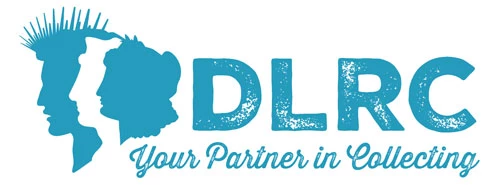




 Loading more ...
Loading more ...








